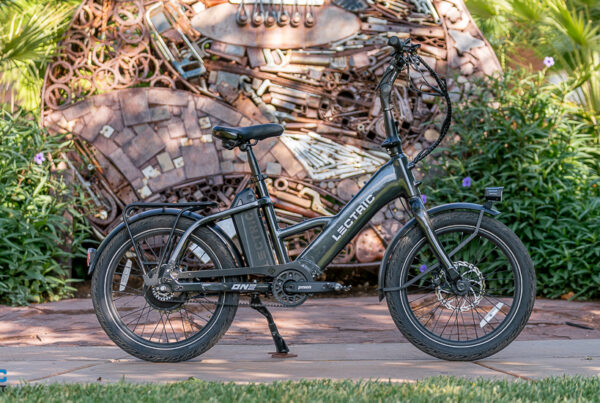For the last 3 years I have really enjoyed riding my Ludicrous enabled Officer X-1 Full suspension ebike. After much use and abuse the rear freehub finally blew out. This is a common problem on higher power mid drive ebikes, but one that is easily remedied by relacing the rear wheel with a DT Swiss rear hub which uses a fantastic steel ratcheting system that is incredibly reliable. This article is about the issues I had when doing the rear wheel relacing and some direction on how to relace a rear wheel and also why I decided to swap the cassette, derailleur, shifter and chain from a 12 speed to a 10 speed chain.
The DT Swiss hubs can be hard to find and there is about a million different versions of them. I have bought about $1500 worth of DT Swiss hubs from bikeman.com and every single one has worked in the ebike I retrofitted them too. Generally I buy an ebike and run it till the freehub fails then I buy a DT Swiss hub and relace the wheel to get the bike back to ridable condition. Every single one of the high power mid drive fatbikes I ride including my Christini AWD are all fitted with the DT Swiss hubs at this point. Here is the cold hard truth, if you are running between 2000-4000 Watts through your drivetrain and plowing through deep snow your freehub will eventually self destruct. The lightweight and expensive aluminum ones will die faster but even cheap steel freehubs will eventually fail. The only hubs I have found that do not fail at those power levels is the DT Swiss ones with the Star Ratcheting system.
In all my DT Swiss conversions I have been able to use the same spokes that came with the original wheel. This makes things a lot easier and faster, just make sure that you keep the spokes on the different sides of the wheel separated because they are generally slightly different lengths. With the X-1 the spokes were extremely thick (12 Gauge?) and did not fit through the holes on the DT-Swiss hubs. I measured the length of the spokes with a spoke ruler and averaged the difference between the two sides and bought a set of 36 cheap spokes on Amazon that were 253mm for just $13.99 available here. Most wheels in the US only have 32 spokes so that leaves me with 4 extra spokes for future breakage. This includes the nipples as well. 38 cents a spoke is quite a bit cheaper than my local bike shop, but if you don’t have a spoke wrench and don’t want to deal with Amazon, you can wander into your local bike shop with the spoke that you have and they will try to find something similar or cut it and thread it if they have to.
Why I went from a 12 speed to a 10 speed drivetrain
Although I was happy with the 12 speed drivetrain that shipped with the X-1, over the course of 3 years of use I did have 2 chain breakages. The fact that I couldn’t use the highest gear without it skipping on the X-1 also meant that it really was only an 11 speed. I have standardized on 10 speeds on all my other snow bikes and I have been happy with the amount of chain breakage that I have to endure. It’s still more breakage than with an 8 speed system, but I can get a larger cassette and often I can find an SRAM X-9 derailleur which from what I can tell are the most bulletproof derailleur you can get for the money. If you know of one that is better, please let me know in the comments below. The problem with switching the number of gears is you have to replace everything, that means the chain, the cassette, the derailleur and the shifter. If you neglect to replace any one of those parts the system simply will not shift properly. The good news is that you can use a short or med cage derailleur instead of the long cage one. It is also easy to find solid steel cassettes that wear much better under higher power loads than the alloy ones in 10 speed. I find that the best cassettes to use are the ones that have a bunch of the gears tied together so that they don’t dig into the freehub because of the power of the motor.

Although relacing rear wheels is a PITA I feel like its the price you have to pay for running mid-drive ebikes in the 2000-4000 Watt range. Most of my other electric fatbikes are running the BBSHD v2 Ludicrous controller which is a stupid fun 18 FET controller that once you start riding with, its hard to go back to anything else. As far as relacing hubs there are some great YouTube videos on how to do it (this one is my favorite). You don’t have to be a super hero to relace a hub, the hardest part is getting the spokes to be the right length and if you are replacing an existing hub chances are you can reuse the existing spokes or figure out what the right length for them will be by guestimating.
Truing your wheel by sound
I don’t use a truing stand or anything fancy like that when truing up wheels. I use to just put them on and then take a ziptie attached to the frame and cut off so I could see when I spun the wheel which side it wobbled to. My last 2 wheel rebuilds I have not even done that, instead I do a system when I adjust the tension on the spokes by sound. Initially I tighten down the spokes with about 2 mm of thread showing then I go around the wheel and tighten each spoke one turn at a time. As the spokes start to get tight I pluck them like a really thick guitar string and then tighten or loosen the spokes based on the tone of the spoke. Just using the sound method I can get the wheels within 1 mm of being true every time. I’ve never heard of anyone else doing it like this, but it’s what works for me.
I hope to get many more years of usage out of my C-1 with the new hub and 10 speed drivetrain. Of all my ebikes the X-1 probably gets the most usage, so it’s not surprising that the freehub on it failed. I’ve found on high power mid drives that eventually pretty much all freehubs will fail. Don’t despair, just get a DT swiss and relace that puppy you’ll be good to go for years to come.
Ride On.
Source link








